Korean steamed eggs (gyeran jjim) is a delicious & easy side dish! Eggs are mixed with water or broth then steamed until light & fluffy! It's also called volcano steamed eggs because of their volcanic cone shape and the steam that releases from the eggs.
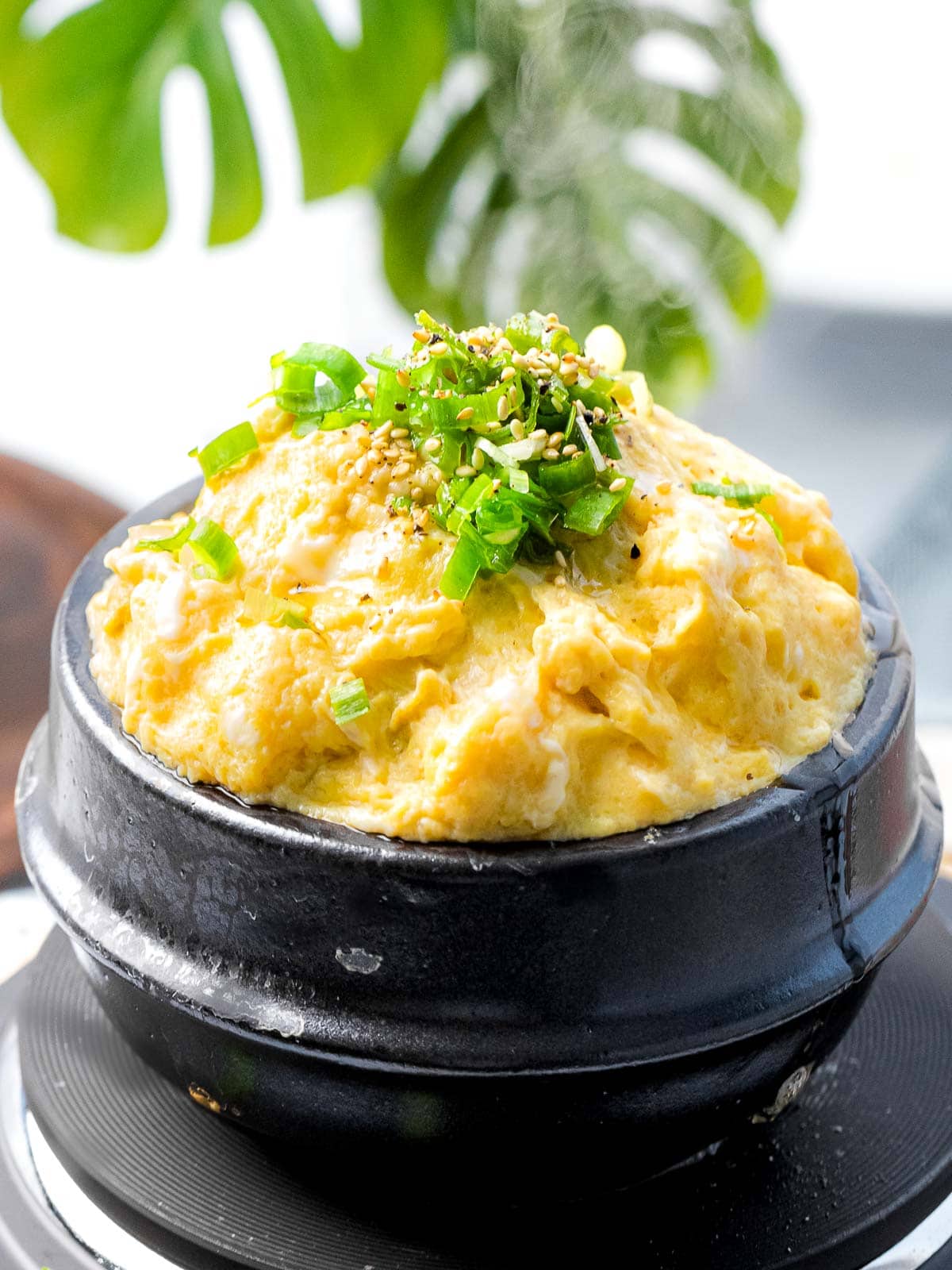
What is Korean Steamed Eggs (Gyeran Jjim)?
Korean steamed eggs, also called 'Gyeran Jjim' in Korea, is a delicious and easy Korean side dish that's made with eggs, water or broth, and seasoned with salt, sesame oil, and green onions.
'Gyeran' translates to egg in Korean and 'Jjim' translates to steamed, hence the name Korean steamed eggs.

This egg side dish (banchan) can also be called Korean volcano steamed eggs because of it's volcanic cone shape and the steam that's released during the cooking process.
Steaming the eggs results in the eggs expanding in the center as it heats up and cooks.
It not only does it result in an impressive presentation but it gives you extra fluffy, soft, and light as air eggs that are perfectly tender.
Ingredients
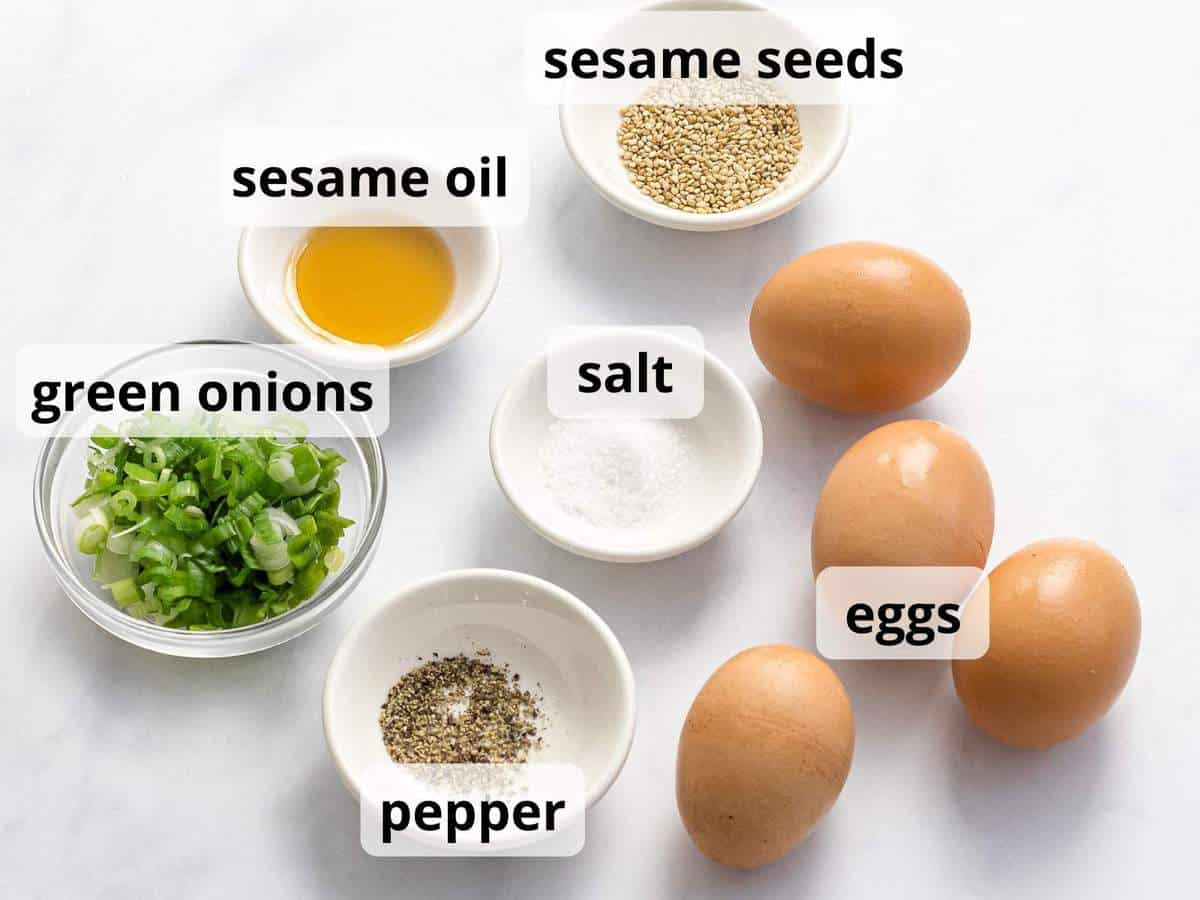
- Eggs - I used large organic, free range eggs. As eggs are the main ingredient, I recommend getting the best eggs possible.
- Water or broth - Use broth for more flavorful eggs. Anchovy broth or dashi are great options.
- Green onions - Green onions and eggs are a common pairing in Korean cuisine.
- Sesame seeds and oil - Adds a wonderful nutty flavor that complements the eggs.
- Optional ingredients - Add finely chopped carrots, ham, or onions into the egg mixture.
Instructions
- Mix the eggs, water/broth, and salt until the whites and yolks are well combined. Optional: For a finer texture, you can strain the mixture.
- Pour the egg mixture into a small pot heated over medium heat.
- Using a spoon, mix the eggs while scraping the bottom and sides. You should start to see the mixture thicken up as the eggs cook.
- When the eggs are about 75% cooked, lower the heat and cover with a domed lid or a heat safe bowl to steam the eggs. Be sure there's enough room for the egg to expand as it steams. After 2 to 3 minutes, you should start to see steam escaping from the cover.
- Uncover and garnish with green onions, sesame seeds, sesame oil, and pepper. The steamed eggs should be light and fluffy. Serve immediately and enjoy!
Recipe Tips
- Korean steamed eggs are traditionally cooked in an earthenware pot (ttukbaegi). If you don't have one, use a pot that holds onto heat well, such as a heavy bottomed pot.
- When cooking the eggs, allow large curds to form to give structure and support to the steamed eggs. This helps reduce deflation.
- Lower the heat before steaming the eggs to prevent them from burning.
- The cover should fit tightly over the pot to allow for proper steaming.
- Serve immediately to enjoy the full height of the steamed eggs! Some deflation is natural similar to a soufflé.
FAQ
To get the volcanic effect of the steamed eggs, the egg mixture must fill up about 75% of the pot and you must use a cover that's domed shaped and allows room for expansion during the steaming process.
This recipe makes about 1.5 cups of egg mixture and the pot I used holds about 2 cups of liquid.
Some deflation is natural similar to a soufflé but if the eggs deflated immediately, it's most likely due to overcooking and overheating.
Lower the heat and steam for less amount of time next time. When cooking the eggs, allow large curds to form to give structure and support for the eggs when they steam.
Chawanmushi contains a higher liquid to egg ratio than gyeran jjim. Though both results in soft, tender eggs, chawanmushi has a silkier texture due to more liquid.
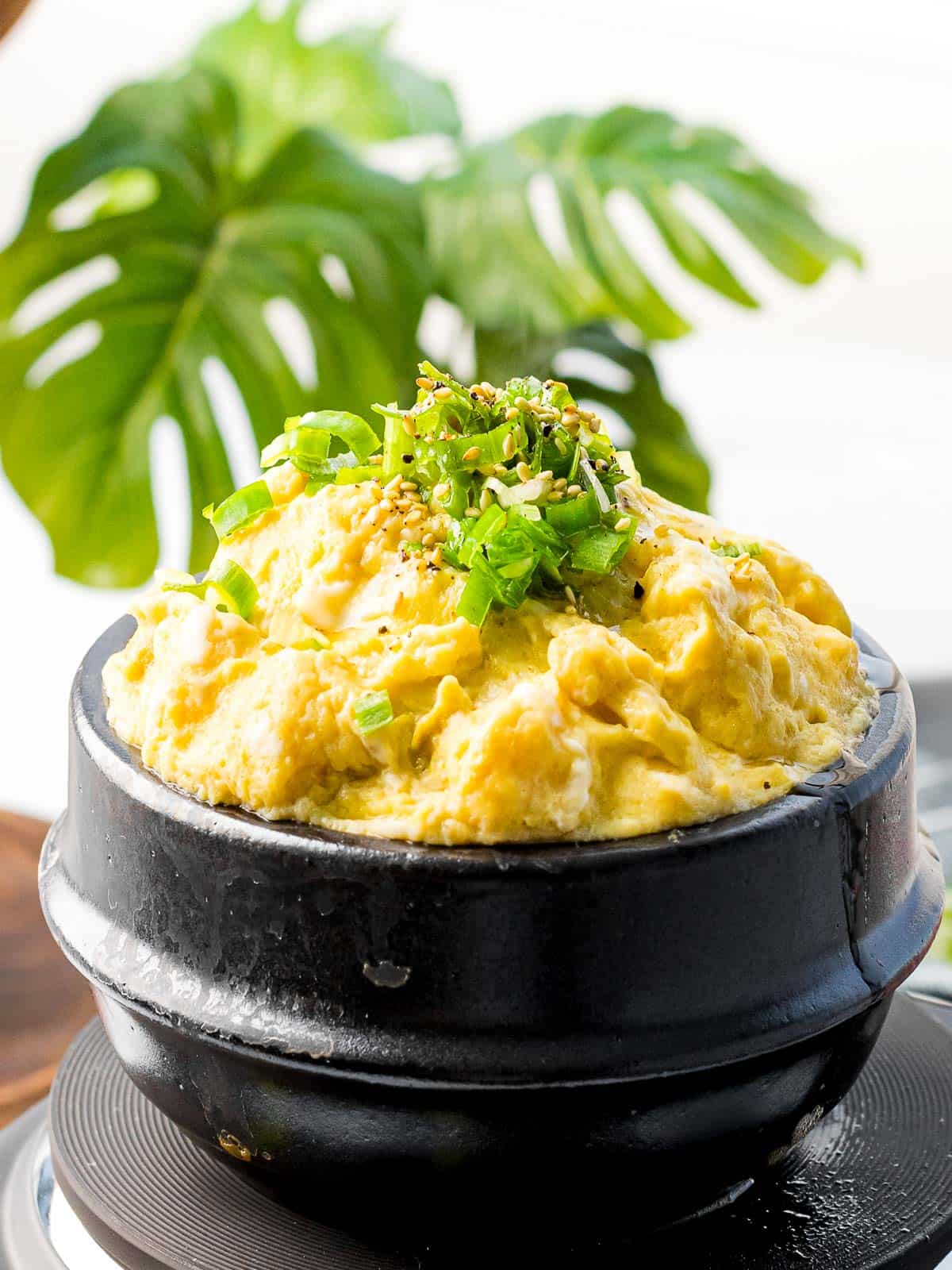
I hope you enjoy this recipe! Please share, rate, or comment below. I'd love to hear from you!
Come find me on Facebook, Pinterest, and Instagram! Share your recipes by tagging @drivemehungry. I love seeing your creations!
Thanks so much for stopping by! 🧡 -Jamie
More Korean recipes:
Recipe
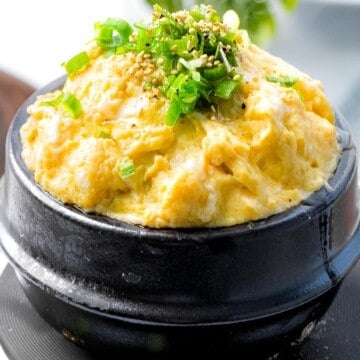
10 Minute Korean Steamed Eggs | Gyeran Jjim (계란찜)
Equipment
☑ Ingredients
- 4 large eggs
- 5 Tablespoons water or broth - see Note 1
- ⅓ teaspoon sea salt
- 1 teaspoon toasted sesame oil
- pinch of black pepper
- chopped green onions - for garnish
- sesame seeds - for garnish
Instructions
- Mix: Mix the eggs, water or broth, and sea salt together in a small bowl until the yolks and whites are well combined. Optional: strain the mixer for a finer texture.
- Partially cook eggs: Heat a small pot over medium heat. I used a Korean earthenware pot (ttukbaegi) that holds about 2 cups of liquid. Pour the egg mixture in and continue stirring with a spoon, scraping the bottom and sides.
- When the eggs are about 75% cooked, you should see large curdles forming. Reduce the heat to low heat. Cover the pot with a domed lid or a heat safe bowl to steam the eggs. Steam for 2 to 3 minutes or until you see steam escaping from the lid. See Note 2.
- Uncover the eggs and garnish with green onions, sesame oil, sesame seeds, and black pepper. Serve immediately and enjoy! See Note 3.
✎ Recipe Notes
- Broth - Use anchovy broth or dashi for more flavor. Adjust the salt according if your broth already contains salt. To make anchovy broth, boil water with anchovy seasoning packets.
- Steaming the eggs - Use a bowl or lid that fits tightly over the pot and allows room for expansion as the eggs will expand as they steam.
- Serving - It's important to serve this immediately as it's natural to see some deflation overtime, similar to a soufflé. If the eggs deflate immediately, it could be a sign of overcooking or the stove being too hot. Try lowering the heat and reducing the steam time.
- Volcano steamed eggs - For the volcanic cone shape, it's essential the egg mixture fills up about 75% of the pot and to use a domed cover that allows room for expansion. I used a Korean earthenware pot that holds about 2 cups of liquid for this recipe. The egg mixture totals about 1.5 cups.
Nutrition
*Nutritional information is an estimate, calculated using online tools.


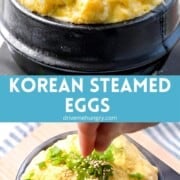
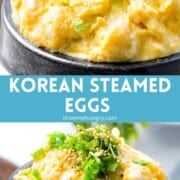
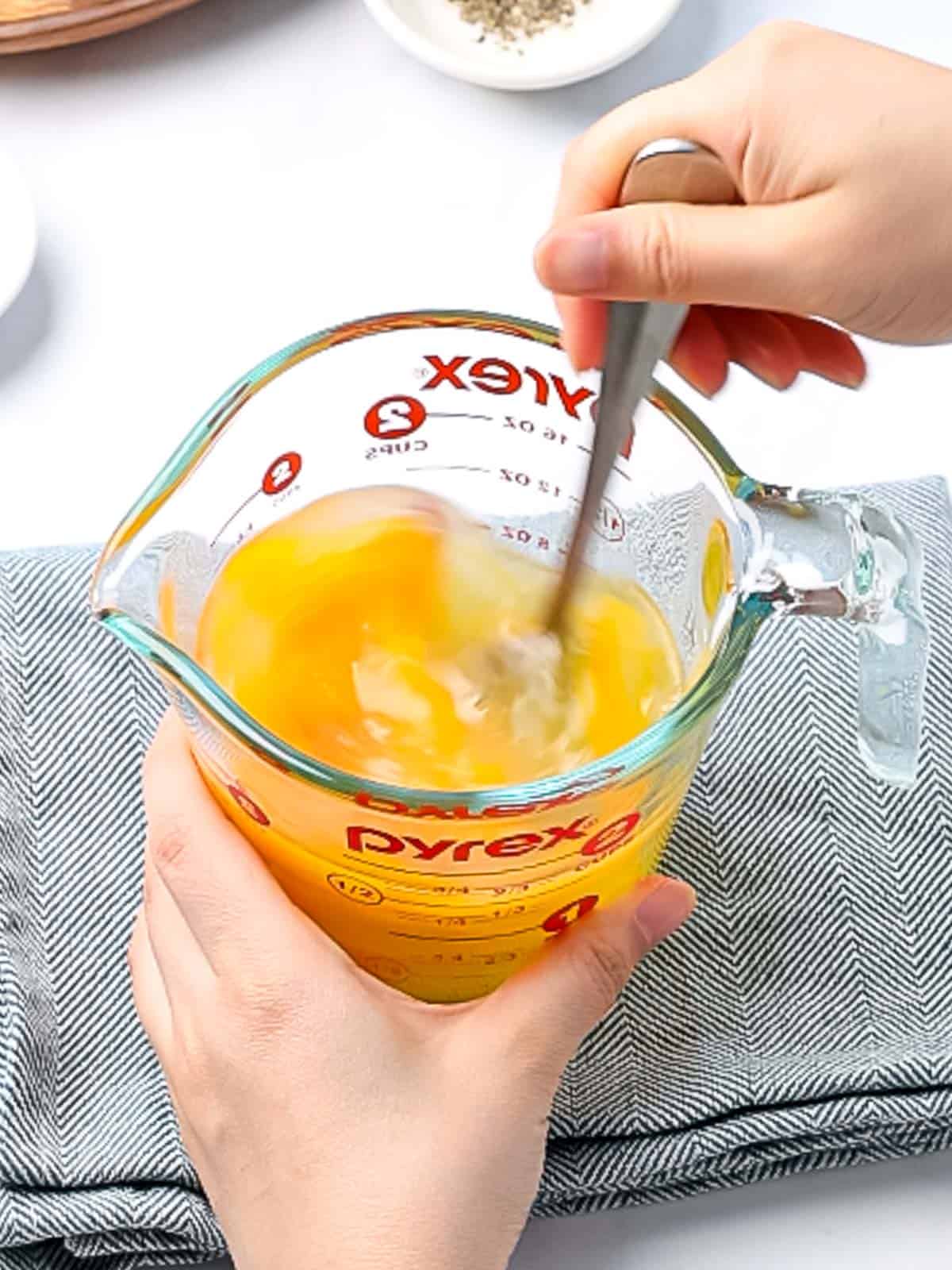
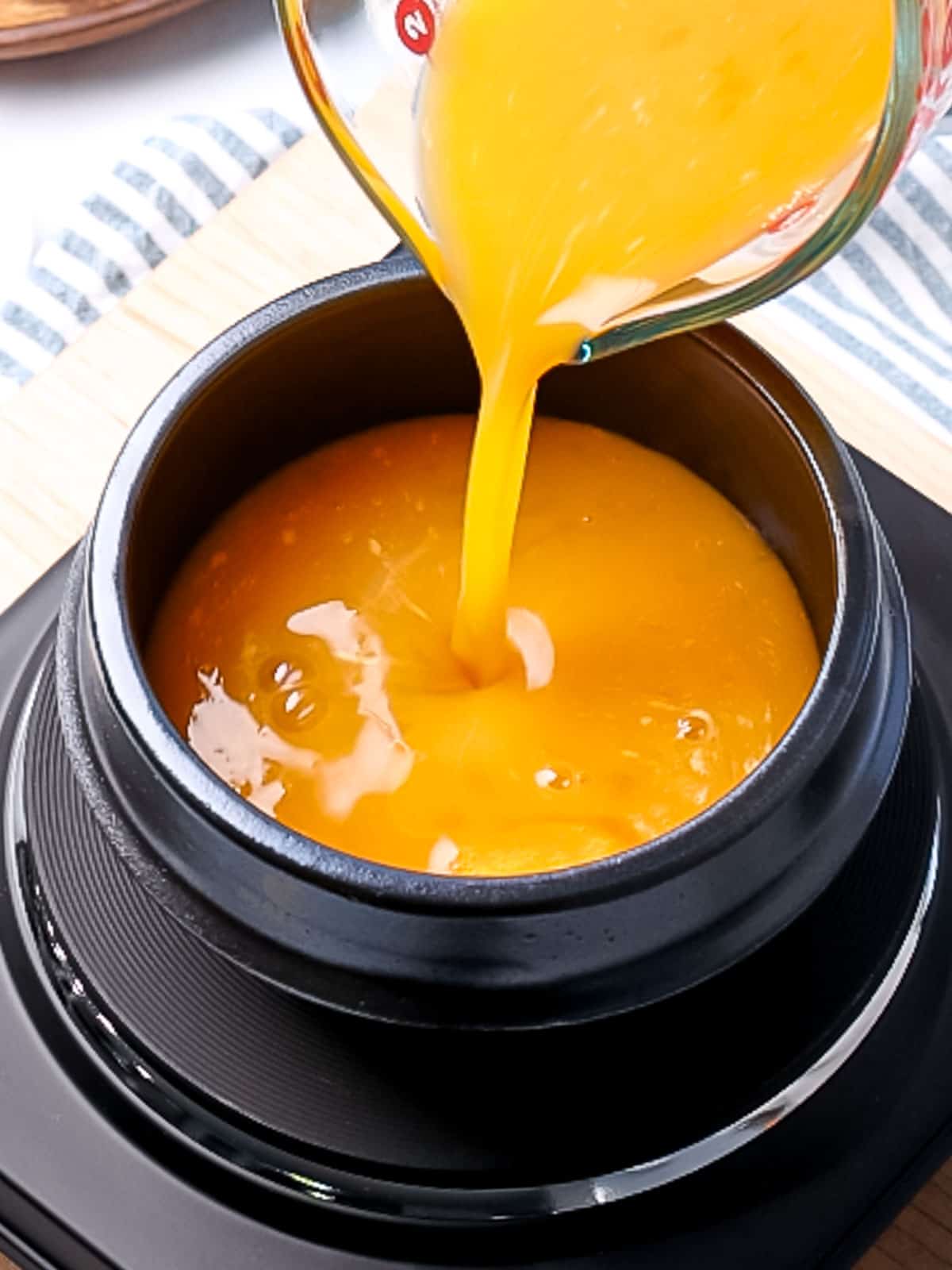
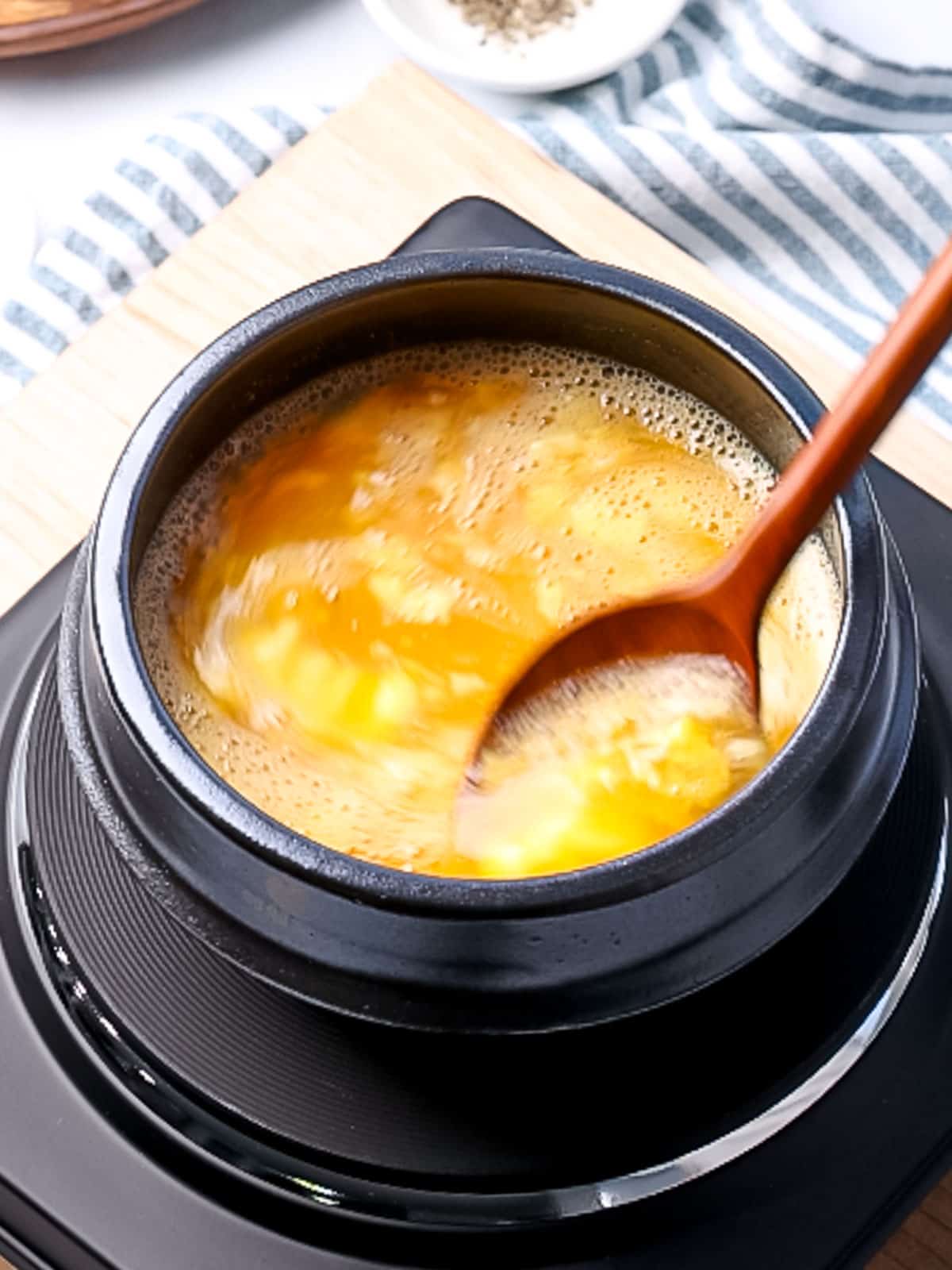
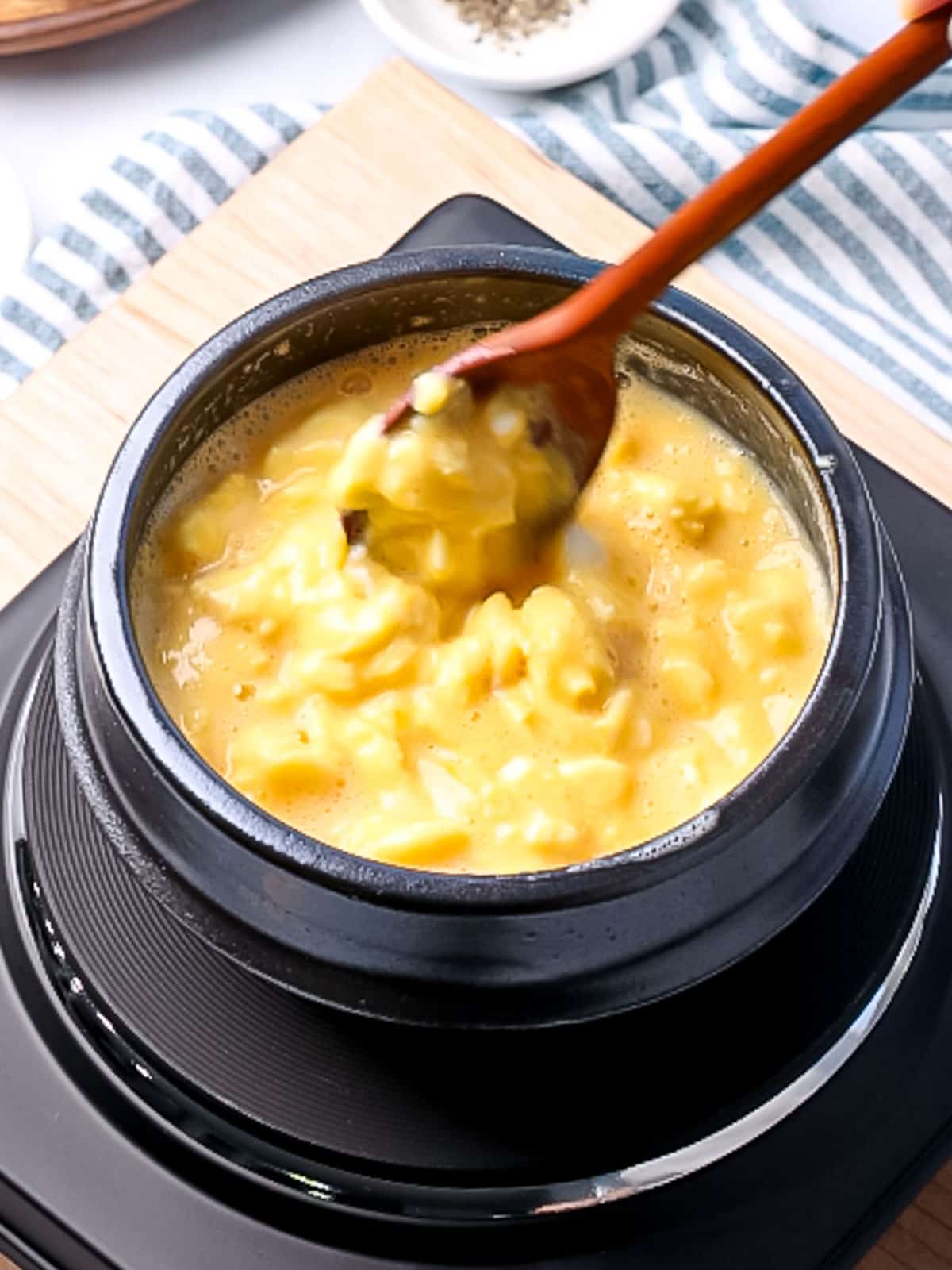
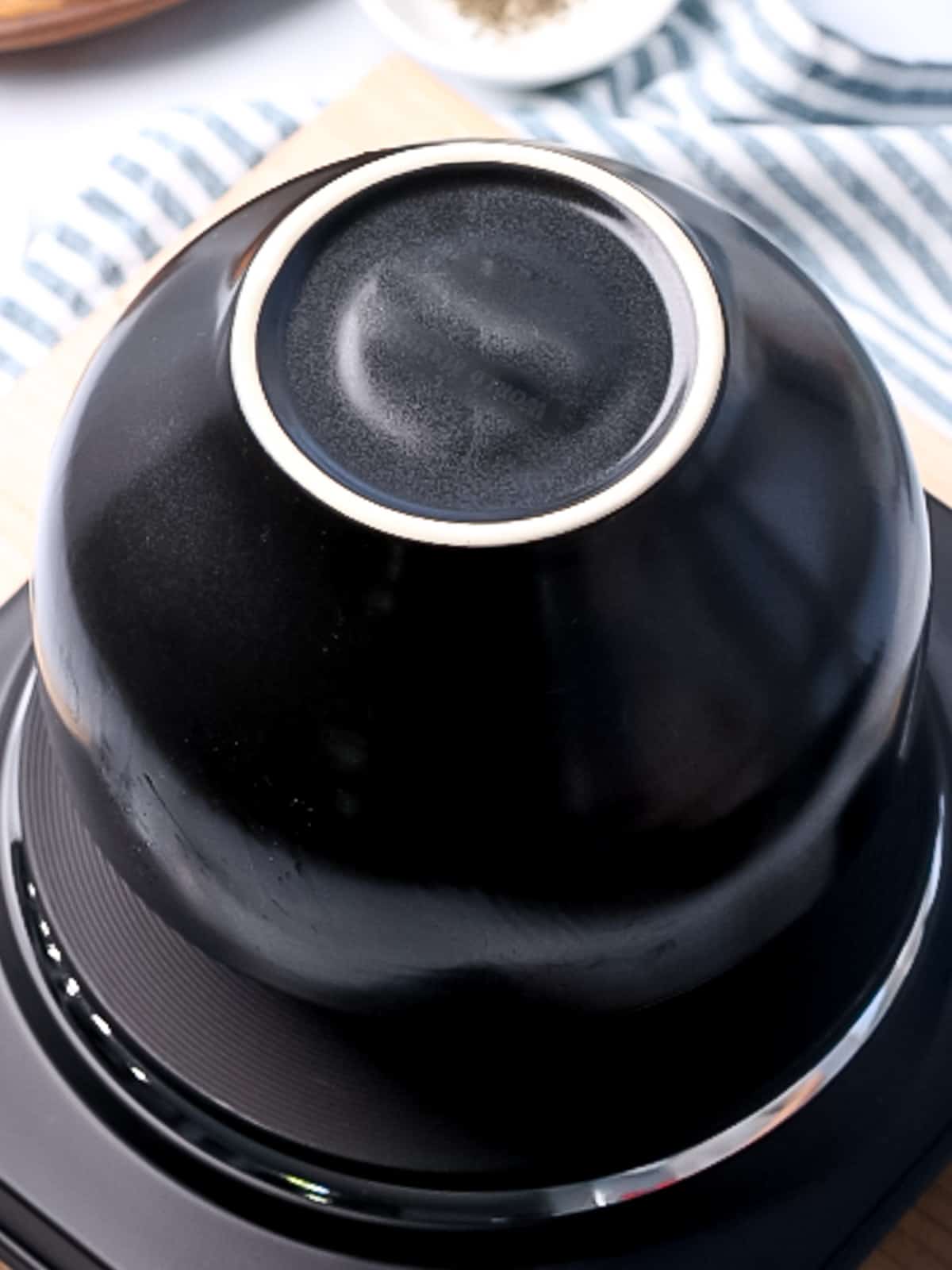
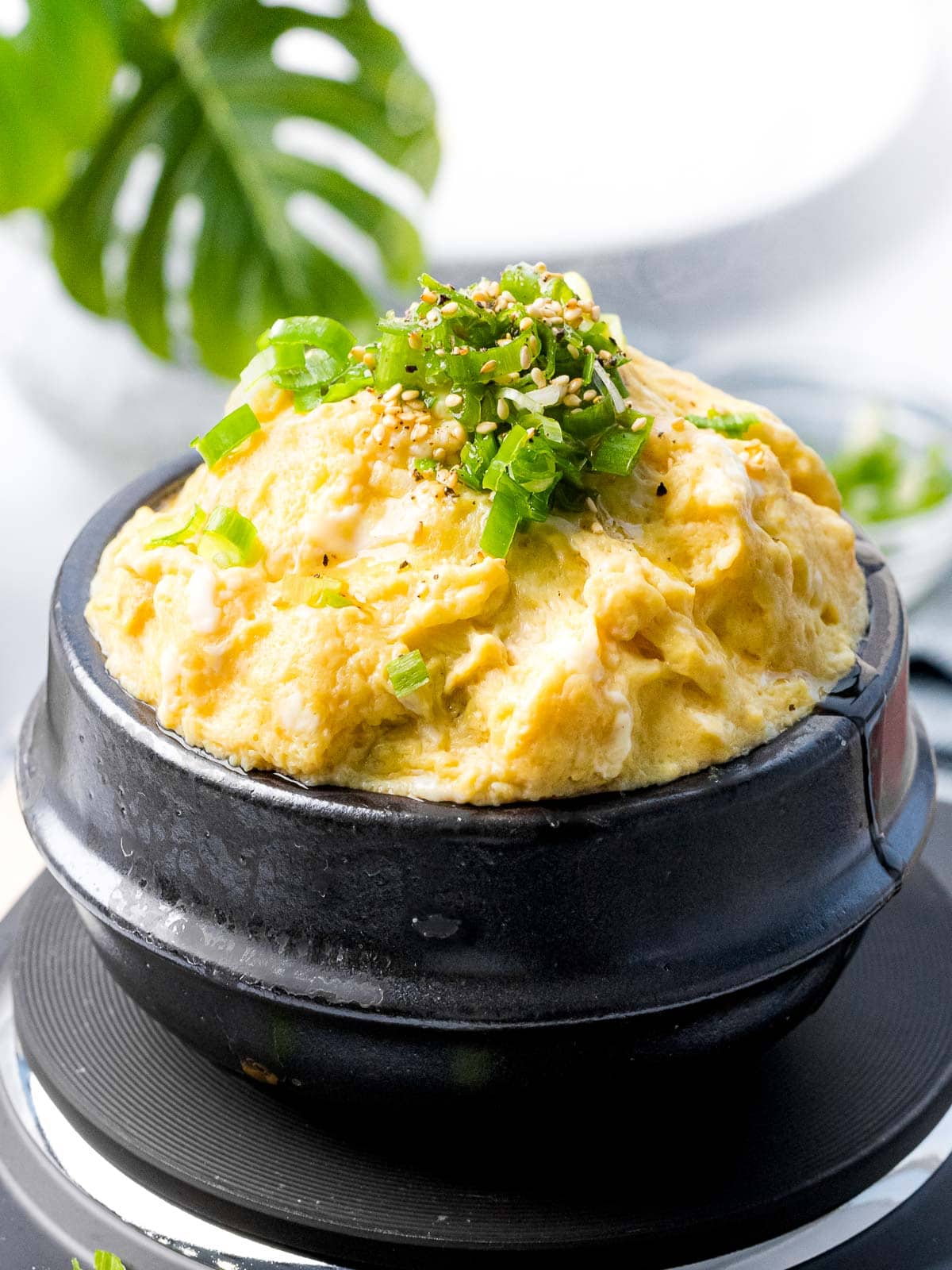
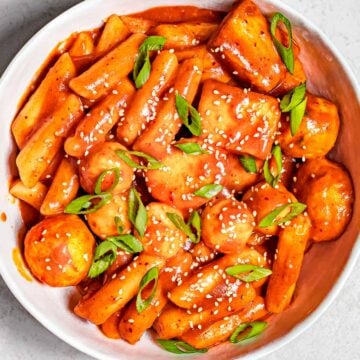
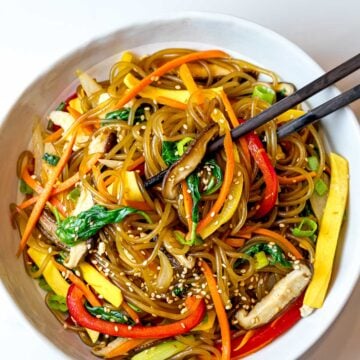
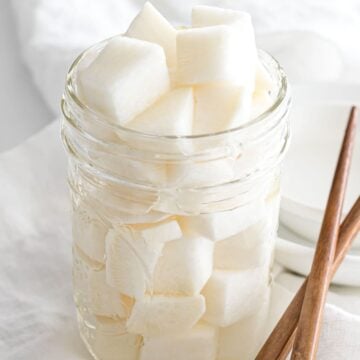
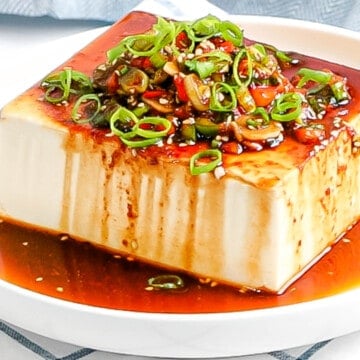

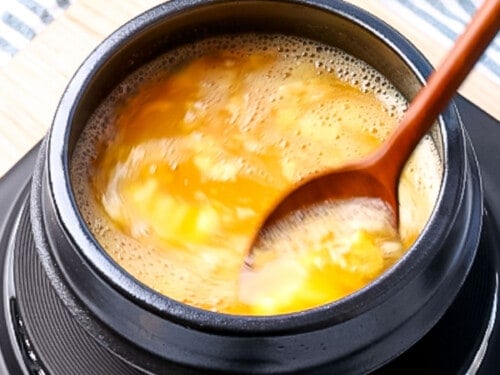
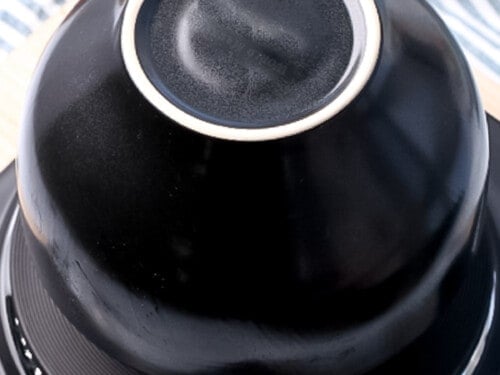
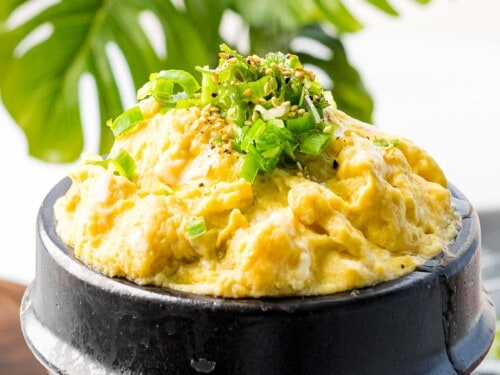
Leave a Comment